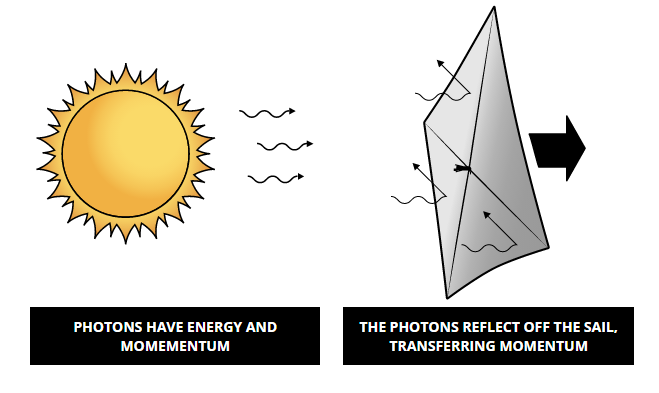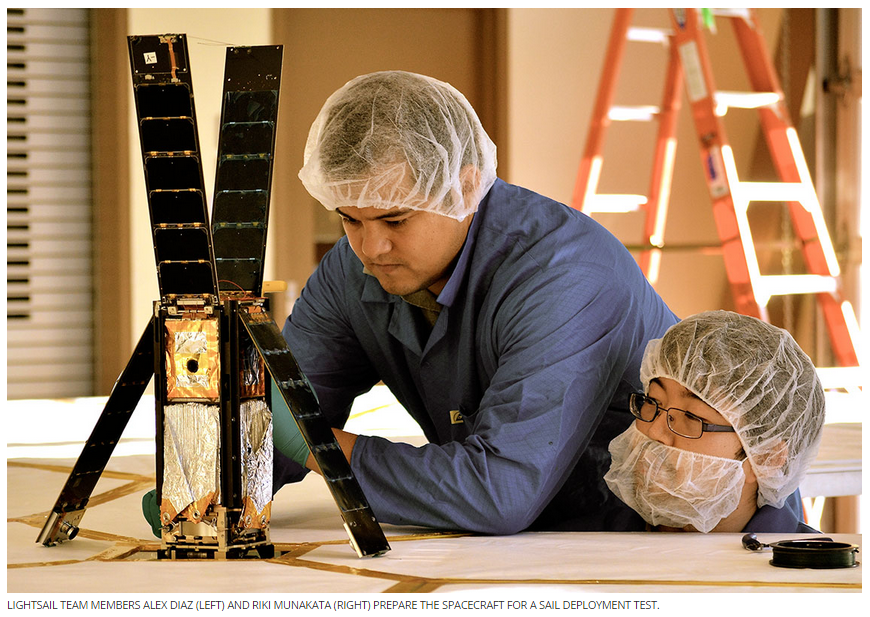
The Planetary Society has announced that the first test solar sail spacecraft will be launched in May this year. The solar sail will move as a result of the suns energy.
The solar sail will blast off the United Launch Alliance Atlas V rocket in May from Florida’s Cape Canaveral Air Force Station. This is a test before the full flight in 2016. The solar sails work by harnessing solar radiation pressure which imparts a very small but continuous push. Over time, this gentle push can accelerate a sailing craft to very high speeds, without the need for any onboard propellant.
 ‘LightSail’ is a three unit CubeSat that is about the size of a loaf of bread. Once in space, the four sides of the cube swing open revealing the solar sail. Four booms then slowly pull the solar sail out from storage. The sail consists of 4 triangular Mylar sails – each sail is 4.5 microns thick (about a quarter of the thickness of your dustbin bag) and together will cover 32 square metres.
‘LightSail’ is a three unit CubeSat that is about the size of a loaf of bread. Once in space, the four sides of the cube swing open revealing the solar sail. Four booms then slowly pull the solar sail out from storage. The sail consists of 4 triangular Mylar sails – each sail is 4.5 microns thick (about a quarter of the thickness of your dustbin bag) and together will cover 32 square metres.
“LightSail is technically wonderful, but it’s also wonderfully romantic. We’ll sail on sunbeams,” says Planetary Society CEO and TV “Science Guy” Bill Nye. “But wait; there’s more: This unique, remarkable spacecraft is funded entirely by private citizens — people who think spaceflight is cool.”
This first test flight will not go high enough above the Earth’s atmosphere to do any actual solar sailing – the point of the mission is test the solar sail deployment sequence and retrieves valuable data.
“There’s an old saying in aerospace, ‘One test is worth a thousand expert opinions.’ After six years of development, we’re ready at last to see how LightSail flies,” said Bill Nye.
Tags: CubeSat, LightSail, Mylar sails, solar radiation pressure, Solar Sail Spacecraft, solar sailing, suns energy, The Planetary Society
